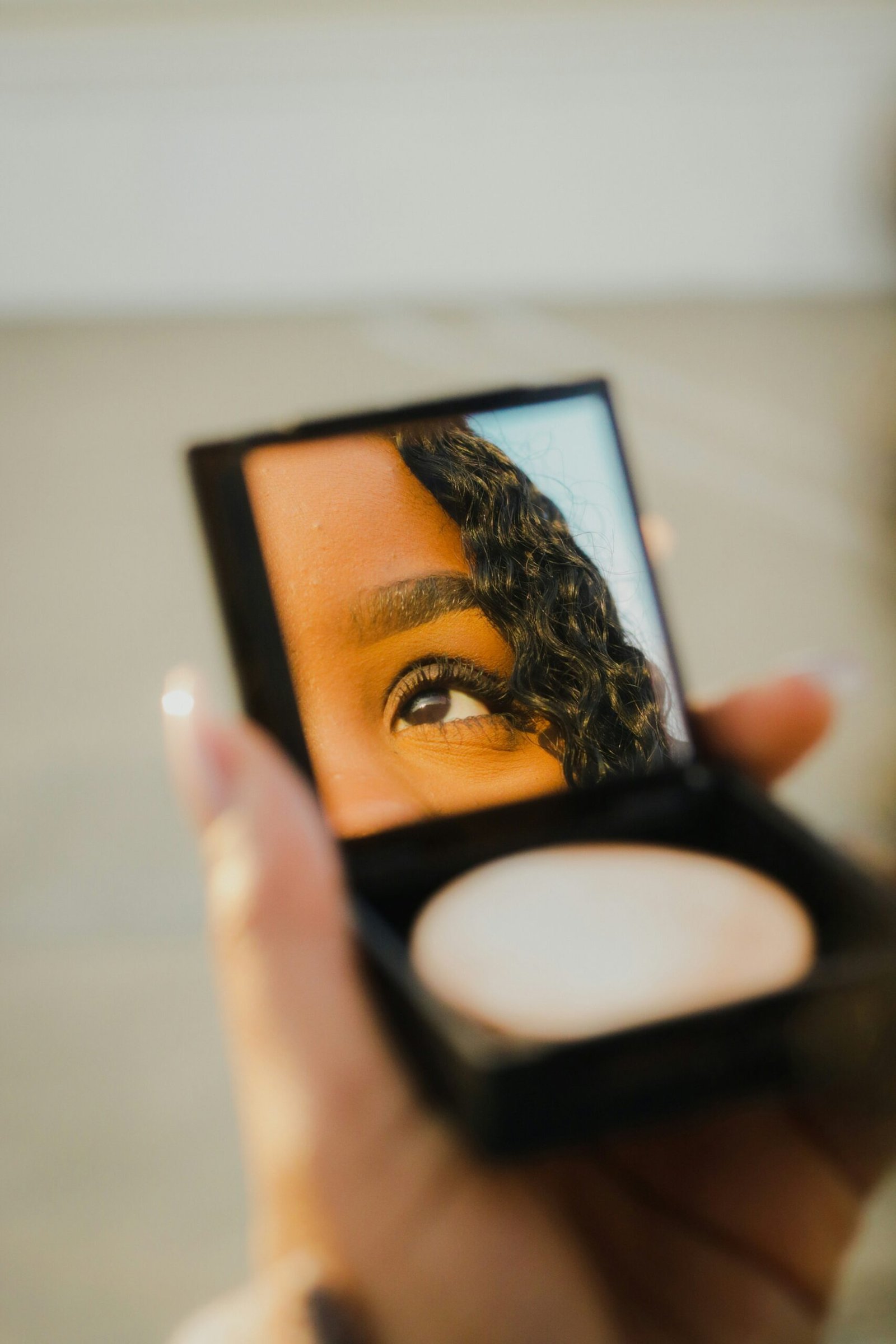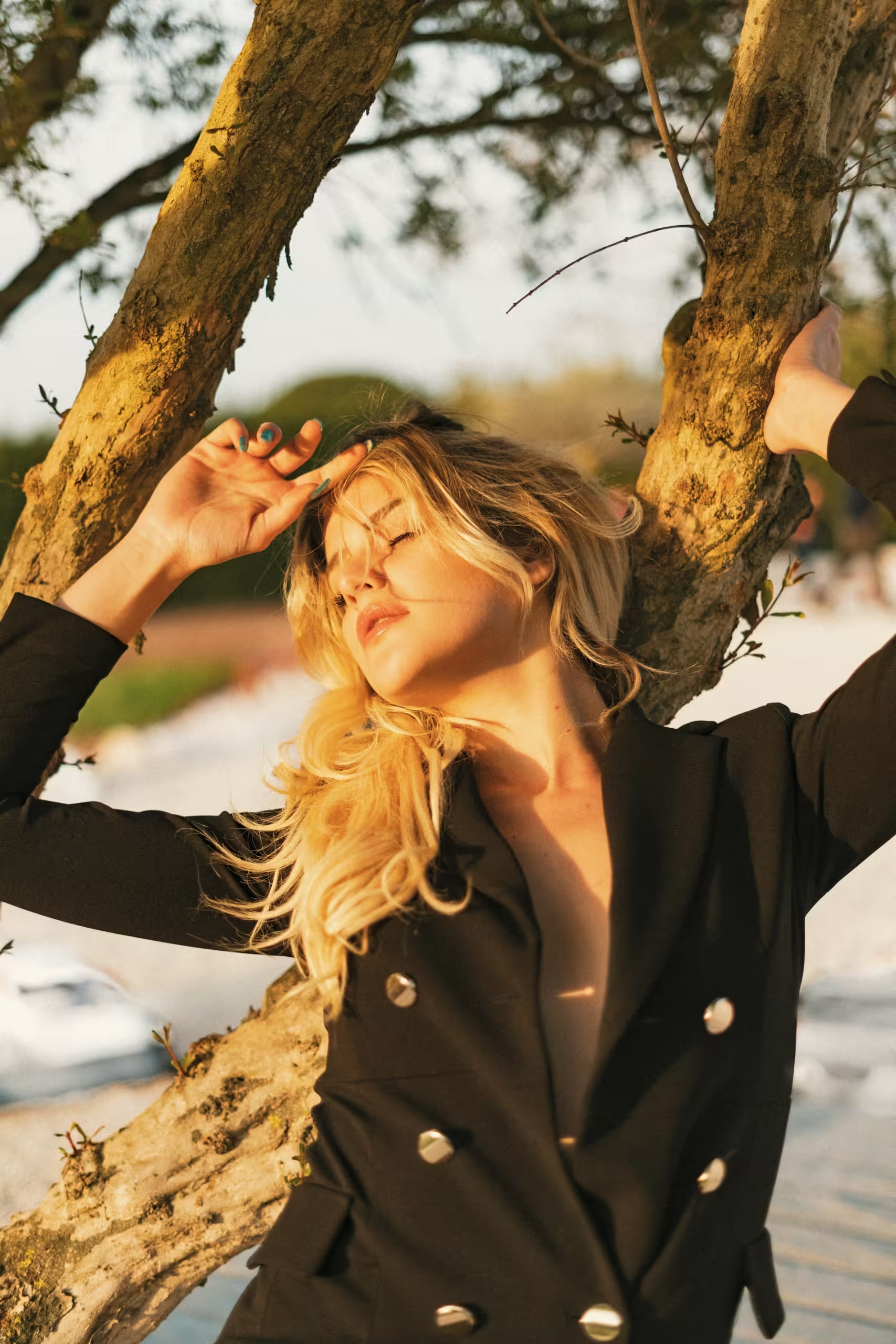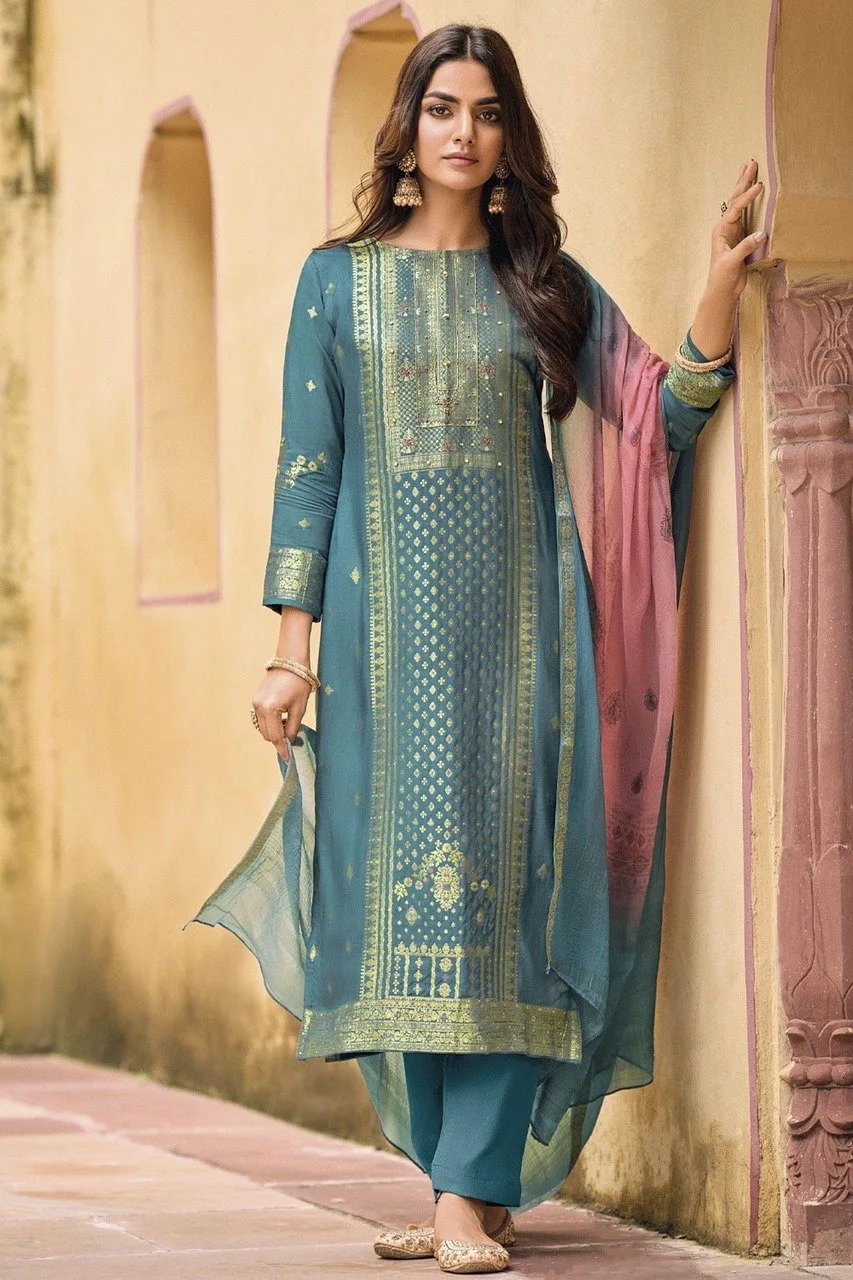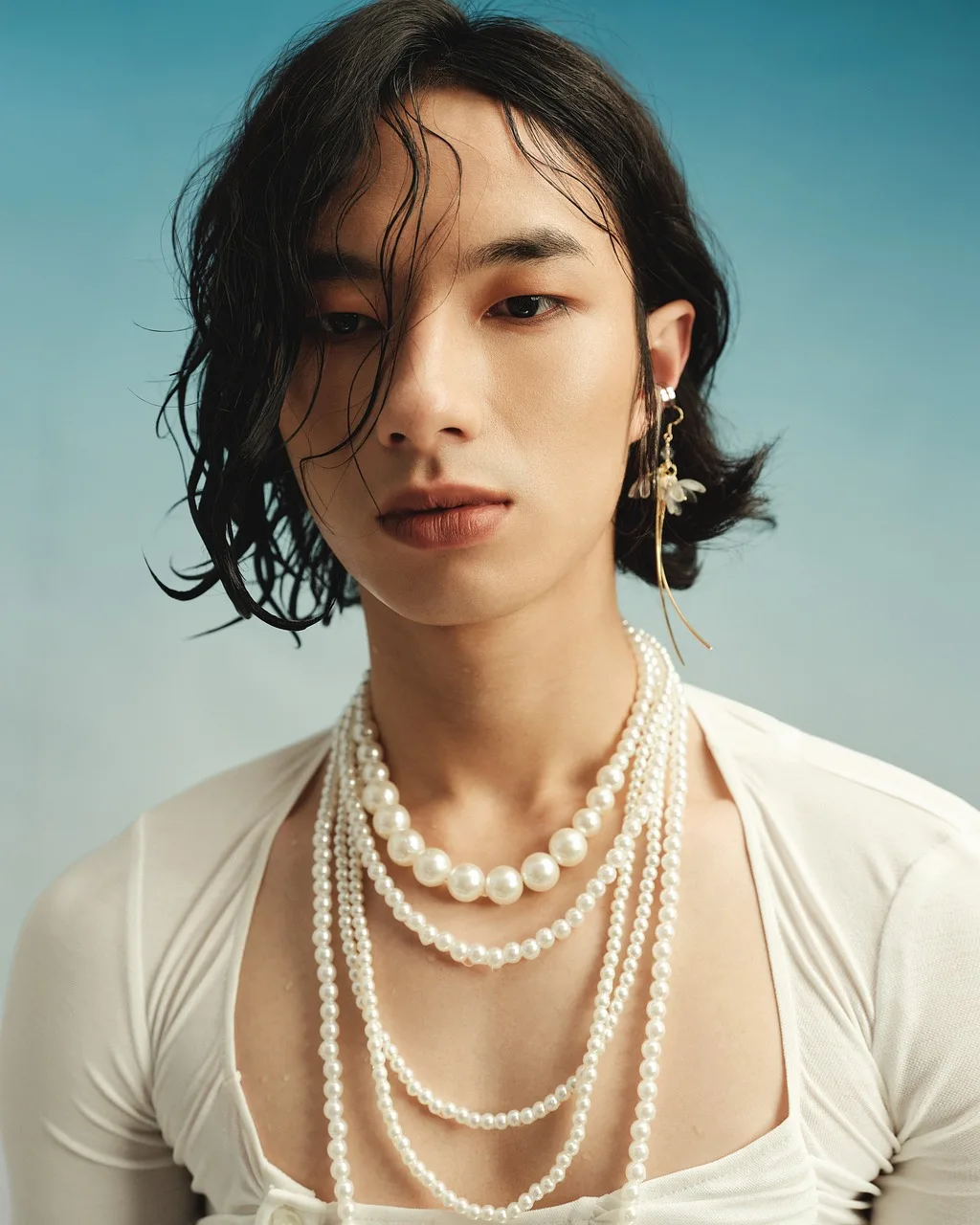Layering Guide: Techniques for the Perfect Multi-Layered Look
Layering is a fundamental fashion technique that transcends mere functionality, offering a sophisticated and dynamic approach to personal style. By combining different garments in strategic ways, layering can create depth, texture, and versatility in any outfit, allowing for endless possibilities in wardrobe creativity. This method is not limited to colder climates for the sake of warmth; rather, it is an art form that can be utilized year-round to achieve a polished and multifaceted look.
Mastering the art of layering involves understanding how to balance proportions, mix various fabrics, and coordinate colors to construct an ensemble that is both visually appealing and practical. For instance, pairing a silk blouse with a chunky knit sweater and a tailored coat can result in a harmonious blend of textures and dimensions. Similarly, incorporating accessories like scarves, belts, and jewelry can further enhance the layered effect, adding intricate details that elevate the overall aesthetic.
Layering also offers versatility, enabling individuals to adapt their outfits to different settings and temperatures. A well-layered outfit can transition seamlessly from a day at the office to an evening out, simply by adding or removing certain pieces. This adaptability makes layering an invaluable technique for those seeking to maximize their wardrobe’s potential without compromising on style or comfort.
In essence, layering is about creating a balanced and cohesive look that reflects one’s personal fashion sense while also meeting practical needs. Whether you’re aiming for a casual, laid-back vibe or a more polished, refined appearance, the principles of layering can be applied to achieve a variety of stylish outcomes. By mastering this technique, you not only enhance your wardrobe’s functionality but also elevate your fashion game to new heights.
Understanding the Basics of Layering
Layering is a quintessential technique in fashion and beauty, essential for creating versatile and polished outfits. The fundamentals of layering begin with understanding proportion, balance, and color coordination. Mastering these principles can significantly enhance your fashion sense, ensuring that your layered looks are both stylish and functional.
Proportion is the cornerstone of effective layering. It involves selecting pieces that complement each other in terms of size and fit. For instance, pairing a slim-fitting base layer with a looser top layer can create a balanced silhouette. Conversely, combining too many oversized items can result in a bulky appearance, which is a common pitfall to avoid.
Balance is equally important when layering. This entails distributing visual weight evenly throughout your outfit. For example, if you’re wearing a voluminous jacket, opt for more form-fitting bottoms to maintain equilibrium. The key is to ensure that no single element overwhelms the entire ensemble, allowing each piece to contribute harmoniously to the overall look.
Color coordination is another critical aspect of layering. Mixing and matching colors can be challenging, but sticking to a cohesive color palette can simplify the process. Neutral tones often serve as a reliable foundation, providing a versatile backdrop for more vibrant hues. Additionally, considering the color wheel can help in selecting complementary or analogous colors, enhancing the visual appeal of your layered outfit.
Choosing the right base layers is fundamental to successful layering. Base layers should be comfortable, breathable, and form-fitting to serve as the foundation for subsequent layers. Fabrics like cotton or merino wool are excellent choices due to their softness and breathability. Moreover, mixing different fabrics and textures can add depth and interest to your outfit. For instance, pairing a silky blouse with a chunky knit cardigan can create a pleasing contrast that elevates your look.
Avoiding common pitfalls like creating bulkiness or mismatched patterns is crucial. To prevent bulkiness, consider the weight and thickness of each layer. Lightweight fabrics should be closest to the skin, while heavier materials can be added as outer layers. As for patterns, mixing too many can create visual chaos. Instead, opt for a statement piece with a bold pattern and keep the rest of the layers relatively simple to achieve a cohesive and stylish appearance.
Choosing the Right Base Layers
Selecting the appropriate base layers is crucial for achieving a fashionable and comfortable multi-layered look. The foundation of any layered outfit, base layers must be chosen with careful consideration of their material, fit, and versatility. These elements ensure that the base layers not only complement the rest of the attire but also provide optimal comfort and style.
When it comes to materials, natural fibers such as cotton, wool, and silk are often preferred for their breathability and softness. Cotton T-shirts and tank tops are popular choices as they offer a smooth texture against the skin and efficiently wick away moisture, ensuring comfort throughout the day. Wool, particularly merino wool, is an excellent option for colder climates due to its superior insulation properties. Silk, on the other hand, provides a lightweight, luxurious feel, making it ideal for layering in more formal settings.
Fit is another critical aspect to consider when selecting base layers. A snug but not tight fit ensures that the base layer can be comfortably worn under additional layers without causing bulkiness or restricting movement. T-shirts and tank tops should fit close to the body, while lightweight shirts can be slightly more relaxed to allow for better air circulation and ease of layering.
Versatility is essential for base layers, as they need to seamlessly integrate with a variety of outfits. Neutral colors such as white, black, and gray are timeless choices that can be easily paired with different outer layers. Additionally, simple patterns and textures can add a subtle touch of visual interest without overwhelming the overall look.
In conclusion, the key to selecting effective base layers lies in choosing high-quality materials, ensuring a proper fit, and opting for versatile pieces. By paying attention to these details, one can create a solid foundation for any multi-layered outfit that harmonizes fashion and beauty while maintaining comfort and functionality.
Mid Layers: Adding Dimension and Warmth
In the intricate art of layering, mid layers play a crucial role by adding both dimension and warmth to an outfit. These layers sit between the base layer and outerwear, providing not only functional insulation but also an opportunity to introduce visual interest and texture. A well-chosen mid layer can transform a simple ensemble into a sophisticated, multi-dimensional look.
Sweaters are a quintessential mid-layer option, offering a variety of styles from chunky knits to sleek, fitted designs. A classic crewneck or a turtleneck sweater can add a cozy element, while a lightweight cashmere sweater can offer elegance without bulk. Cardigans, whether cropped or longline, are versatile additions that can be layered over shirts or dresses, providing extra warmth and a polished appearance. They also allow for easy adjustments to temperature changes, making them practical for both indoor and outdoor settings.
Blazers are another excellent choice, particularly for creating a refined and structured look. A well-tailored blazer can elevate a casual outfit, adding a professional touch that is perfect for office settings or formal occasions. Opt for neutral colors for versatility, or experiment with patterns and textures for a more fashion-forward approach. Vests, whether padded for extra warmth or tailored for a sleek silhouette, offer a unique layering option that can enhance the overall outfit without overwhelming the base layer.
When selecting mid layers, it’s important to consider the balance between functionality and aesthetics. The mid layer should complement the base layer in terms of color, texture, and fit. Avoid overly bulky pieces that can create a cumbersome look, and instead, aim for items that provide warmth while maintaining a streamlined silhouette. By thoughtfully integrating mid layers into your wardrobe, you can achieve a harmonious and stylish multi-layered look that is both practical and visually appealing.
Outer Layers: The Final Touch
Outer layers serve as the crowning element of any well-curated, multi-layered outfit. These pieces not only provide the necessary protection against varying weather conditions but also play a crucial role in defining one’s overall fashion statement. Selecting the appropriate outerwear requires a careful balance between functionality and style, ensuring the entire ensemble is cohesive and visually appealing.
Coats are a timeless choice that can effortlessly elevate any outfit. Whether it is a classic trench coat for a sophisticated look or a wool overcoat for added warmth during colder months, coats offer versatility that can transition seamlessly from professional settings to casual outings. The key is to choose a coat that complements the underlying layers while providing an additional dimension of elegance and sophistication.
Jackets, on the other hand, offer a more relaxed and versatile option. From denim jackets that exude a casual, laid-back vibe to leather jackets that add an edgy touch, jackets are indispensable for those seeking to blend comfort with style. Bomber jackets and blazers can also be excellent choices for creating a polished yet approachable look. Selecting the right jacket involves considering the occasion and ensuring it harmonizes with the rest of the attire.
Parkas are particularly functional for colder climates, combining warmth with a trendy aesthetic. These insulated, often hooded pieces provide excellent protection against harsh weather while maintaining a stylish appearance. Parkas can be paired with various layers beneath, from chunky knit sweaters to lightweight thermal tops, making them a versatile addition to any winter wardrobe.
Ultimately, the outer layer should serve as both a practical and fashionable component of your outfit. It should enhance the overall look, drawing all the layers together into a cohesive and polished presentation. Whether opting for a coat, jacket, or parka, careful consideration of the occasion, weather, and underlying layers will ensure that your outerwear not only protects but also perfects your multi-layered ensemble.
Accessorizing to Enhance Your Layered Look
Accessories play a pivotal role in refining and enhancing a multi-layered outfit, serving as the final touches that bring the entire ensemble together. Thoughtfully chosen accessories can add personality, flair, and a touch of elegance to your fashion layers, transforming a simple outfit into a statement look. To achieve an impeccable layered appearance, it’s essential to consider the types of accessories and their integration into your overall style.
Scarves are a versatile accessory that can be draped, tied, or wrapped in numerous ways to complement your layers. Opt for scarves in contrasting colors or patterns to add a visual interest, or select a neutral tone for a more cohesive look. Additionally, scarves can provide extra warmth, making them both functional and stylish.
Hats are another accessory that can elevate your layered outfit. Whether it’s a fedora, beanie, or wide-brimmed hat, the right headwear can add a chic element and complete your look. When choosing a hat, consider the overall color palette and style of your layers to ensure harmony.
Belts are particularly useful in defining your silhouette within a layered ensemble. A well-placed belt can cinch in the waist and create structure, preventing the layers from looking bulky. Choose belts that complement the textures and colors of your outfit; for example, a leather belt can add a touch of sophistication, while a fabric belt may offer a more casual vibe.
Jewelry, including necklaces, bracelets, and earrings, can add a touch of sparkle and elegance to your layered look. When accessorizing with jewelry, less is often more. Select pieces that enhance rather than overpower your outfit. Layering delicate necklaces or stacking subtle bracelets can add depth without causing clutter.
Finally, when selecting accessories, aim for balance. Avoid over-accessorizing, which can detract from the overall aesthetic of your layered look. The goal is to enhance and harmonize, creating an outfit that feels effortlessly stylish and uniquely you.
Seasonal Layering Tips
Layering is an essential technique in fashion that allows you to stay stylish and comfortable throughout the year. The key to mastering this art lies in understanding how to adapt your layers according to the season, weather conditions, and temperature fluctuations. By choosing the right fabrics and colors, you can effortlessly transition your wardrobe from spring and summer to fall and winter.
In spring, the weather can be quite unpredictable, with chilly mornings and warmer afternoons. Light layers are your best friend during this season. Start with a breathable base layer, such as a cotton or linen shirt, and add a lightweight sweater or cardigan. A trench coat or a denim jacket makes a perfect outer layer, providing just enough warmth without causing overheating. Pastel colors and floral prints not only embrace the essence of spring but also add a fresh touch to your ensemble.
Summer layering focuses on maintaining comfort and coolness. Opt for lightweight and moisture-wicking fabrics like cotton, linen, and chambray. A tank top or a sleeveless blouse serves as an excellent base layer, while a lightweight kimono or a sheer shirt can add a stylish element without trapping heat. Light colors and patterns, such as whites, beiges, and tropical prints, help reflect sunlight and keep you cool. Accessories like hats and sunglasses can also enhance your summer look while providing additional protection from the sun.
As temperatures drop in the fall, it’s time to incorporate warmer layers. Start with a long-sleeve shirt or a turtleneck as your base layer. Add a knitted sweater or a flannel shirt for added warmth. A versatile outer layer, such as a leather jacket or a wool coat, can complete your look while providing protection from the brisk autumn air. Earth tones, rich oranges, and deep burgundies are excellent color choices for this season, reflecting the natural hues of fall foliage.
Winter demands the most strategic layering to combat the cold. Begin with a thermal or moisture-wicking base layer to retain warmth. Add a thick sweater or a fleece for insulation. For the outer layer, invest in a quality coat, such as a down jacket or a wool overcoat, to shield against harsh weather. Accessories like scarves, gloves, and beanies are not only practical but also add a cozy charm to your outfit. Darker colors and jewel tones, such as navy, emerald, and burgundy, are perfect for winter, exuding elegance and sophistication.
By mastering the art of seasonal layering, you can enhance your fashion game while staying comfortable and stylish throughout the year. Selecting the appropriate fabrics and colors for each season ensures that you are prepared for any weather condition while making a fashionable statement.
Styling Examples and Outfit Ideas
Layering is an art that combines fashion and beauty to create versatile and dynamic looks suitable for any occasion. Whether you’re dressing for a casual outing, a day at the office, or a formal event, the right layers can elevate your outfit and showcase your personal style.
For a casual day out, consider starting with a basic foundation such as a plain white tee. Layer with a cozy, oversized cardigan in a neutral color. Add a denim jacket on top for an additional layer that provides both warmth and a touch of rugged style. Complete the look with skinny jeans and ankle boots. Incorporate accessories like a chunky scarf and a beanie to bring the whole ensemble together. This combination not only keeps you warm but also allows you to peel off layers as the day warms up.
When it comes to a professional work setting, layering can still be stylish and functional. Begin with a crisp button-down shirt, preferably in a solid color or subtle print. Layer a lightweight cashmere sweater over it, allowing the collar and cuffs of the shirt to peek out. Pair this with tailored trousers and a sleek blazer. For added sophistication, opt for a statement necklace and a pair of classic pumps. This combination balances professionalism with a sense of fashion-forward thinking, making you look polished and put-together.
For formal events, layering can add an element of elegance and depth to your outfit. Start with a fitted dress in a rich, luxurious fabric. Layer a sheer, embellished cape or shawl over the dress for a touch of glamour. A tailored coat in a complementary color can be added for warmth without compromising the overall look. Finish with delicate jewelry, a clutch, and high-heeled sandals. This approach ensures that each layer contributes to a cohesive and refined appearance, perfect for making a statement at any high-end gathering.
By thoughtfully combining different garments and accessories, you can master the art of layering to create stylish and functional outfits. Whether your day calls for casual, professional, or formal attire, these layering techniques will help you achieve a polished and multi-dimensional look.
Share this content:



